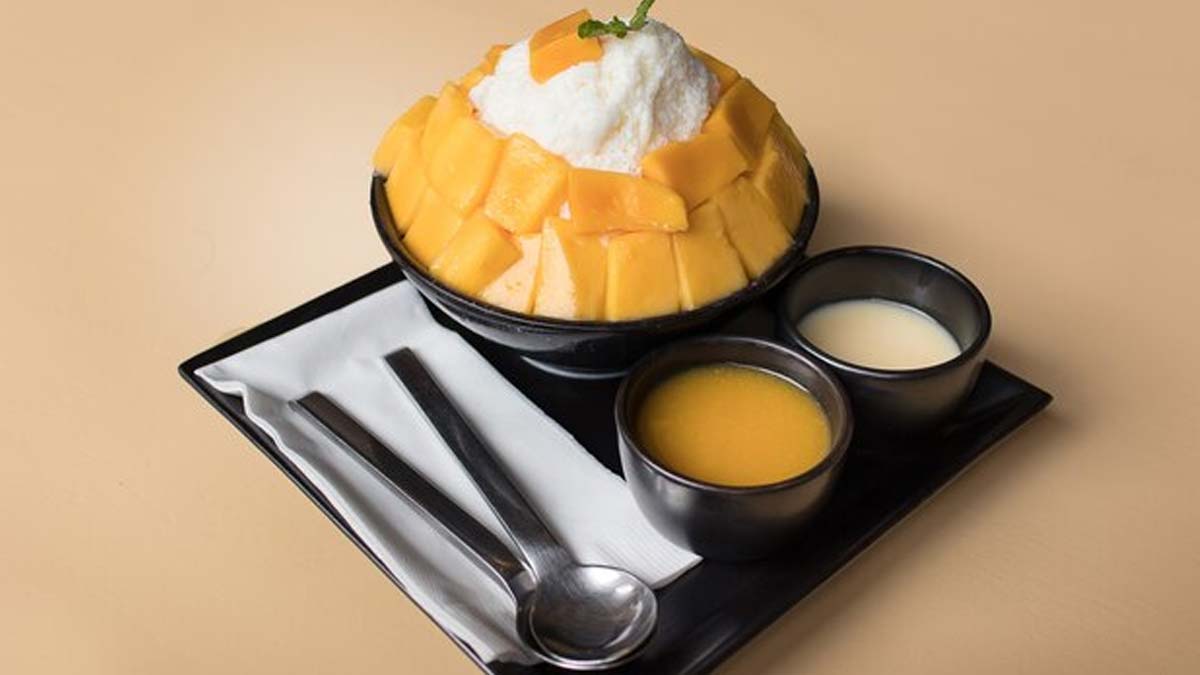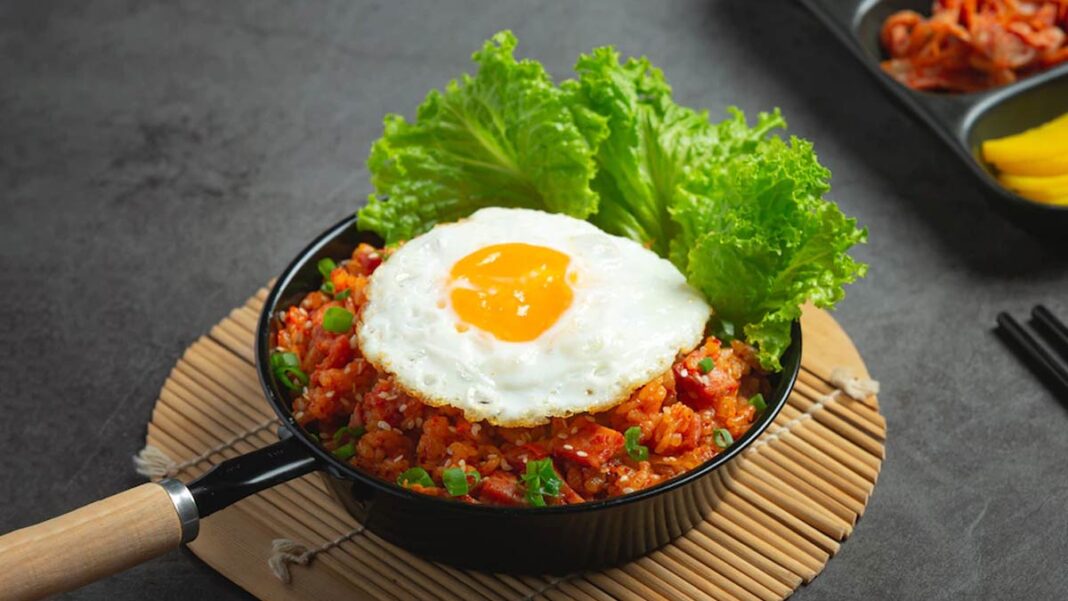## From Seoul’s Streets to Your Plate: 5 Korean Drama Food Cravings You Need to Conquer
We’ve all been there: glued to the screen, mesmerized by a K-drama’s captivating storyline, but our attention is constantly diverted by the mouthwatering spread on the characters’ tables. Korean dramas aren’t just about romance and intrigue; they’re a delicious window into the vibrant world of Korean cuisine.

Korean Fried Chicken: A Favourite in Korean Dramas

Korean Fried Chicken has gained immense popularity in recent years, not just in Korea but also around the world. The rise of the Hallyu Wave or Korean Wave in India has drastically increased during the COVID-19 pandemic. Korean Fried Chicken is widely seen in Korean movies, Korean dramas, and reality shows which played a significant role in the popularity of Korean food all over the world. This mouthwatering chicken dish known as Korean Fried Chicken was made popular by the Korean drama Crash Landing On You. It is first marinated with a variety of ingredients, deep-fried twice for added crispiness, and then finished with a glaze made of soy sauce, garlic, and honey. Somaek, a kind of beer, goes well with Korean fried chicken.

Unique Flavors and Textures
Korean Fried Chicken is unlike any other fried chicken dish. The marinade used is a secret blend of ingredients, which gives it a unique flavor profile. The double-frying technique used to cook the chicken makes it crispy on the outside and juicy on the inside. The glaze adds a sweet and savory flavor to the dish, making it a perfect combination of flavors and textures.

Kimchi: A Staple in Korean Cuisine
Kimchi is a staple in Korean cuisine and is a fermented salad made with cabbage, especially Napa cabbage which is called Baechu. This tangy-spicy treat is made with a variety of seasonings, including garlic, green onions, salt, red chillies (gochugaru), and other spices. Kimchi is best paired with main dishes for lunch or dinner. It is a high-nutrient food that is rich in vitamins, minerals, and probiotics, making it a healthy addition to any meal.

Cultural Significance
Kimchi is not just a food item but also has cultural significance in Korea. It is a symbol of Korean cuisine and is often served at special occasions like weddings and holidays. Kimchi-making is also a social activity in Korea, where families and friends come together to make kimchi and share stories.

Tteokkbokki: A Spicy and Savoury Delight
Tteokkbokki is a popular Korean street food made with chewy rice cakes simmered in a spicy and savoury sauce. This comforting dish is perfect for sharing with your loved one on Valentine’s Day, as you slurp up the tender rice cakes and revel in the fiery flavours of the sauce. For extra flavour, you can even pair it with dishes like fish cakes, boiled eggs, and cheese to create a Tteokbokki feast that will warm your heart and fill your stomach.

Unique Flavors and Textures
Tteokkbokki is a dish that is both spicy and savoury, with a unique combination of flavours and textures. The chewy rice cakes are cooked in a sweet and spicy sauce made with Gochujang (red pepper paste), soy sauce, sugar, and sesame oil. The sauce is sweet and spicy, with a depth of flavour that is both familiar and exotic.

Korean Street Food: A Staple of Korean Culture
Korean street food has gained immense popularity in recent years, both in Korea and around the world. The rise of the Hallyu Wave or Korean Wave in India has drastically increased during the COVID-19 pandemic. Korean street food is widely seen in Korean movies, Korean dramas, and reality shows which played a significant role in the popularity of Korean food all over the world. These delicious and affordable snacks are a staple of Korean culture and can be found in bustling markets, food stalls, and night time food festivals. From savoury to sweet, there’s something for everyone to enjoy.
Korean Street Food: A Guide
- Korean corn dogs, also known as hot dogs on a stick or Gamja Hot Dog in Korean, are a popular street food that consists of a hot dog or sausage that is coated in a sweet and savory batter, deep-fried until golden brown, and then encrusted with panko breadcrumbs or potato starch. It’s often topped with scallions and boiled eggs.
- Tteokbokki is a spicy rice cake dish that is a Korean classic and one of the most popular street foods. It is seen in a lot of popular Korean dramas. The chewy rice cakes are stir-fried in a sweet and spicy sauce made with Gochujang (red pepper paste), soy sauce, sugar, and sesame oil. They are often served with a variety of dipping sauces, such as ketchup, mustard, and mayonnaise.
- Hotteok is a sweet pancake filled with brown sugar, cinnamon, and nuts, then pan-fried until crispy on the outside and gooey on the inside. It’s often eaten as a snack or dessert and is especially popular during winter when it’s warm and comforting.
- Mandu are Korean dumplings that are filled with a variety of ingredients, including meat, vegetables, and tofu. These Korean dumplings come in various shapes and fillings, from meat to vegetables to seafood. They’re typically boiled or steamed, then pan-fried until crispy on the bottom. They’re often served with a dipping sauce made with soy sauce, vinegar, and sesame oil.
- Bindaetteok also known as Mung Bean Pancakes is made by grinding mung beans into a paste, then mixing it with vegetables like spinach and scallions, as well as seasonings like garlic and sesame oil. The mixture is then pan-fried until crispy on the outside. They’re often eaten as a side dish or snack.
- Japchae is a stir-fried noodle dish made with sweet potato starch noodles (dangmyeon), vegetables like spinach and carrots, and sometimes meat like beef or pork. It’s seasoned with soy sauce, sesame oil, and sugar, then stir-fried until everything is cooked through. It’s often eaten as a main dish or served at special occasions like weddings or birthdays.
- Skewered fish cakes are a popular Korean street food made from fish paste that is shaped into balls and skewered on bamboo sticks. They are often deep-fried or grilled and served with a dipping sauce. It was seen in the popular Korean drama ‘Weightlifting Fairy Kim Bok-joo’.
Conclusion
From the crispy crunch of Korean Fried Chicken to the fiery kick of Kimchi, Korean dramas have tantalized our taste buds with a symphony of culinary delights. This exploration into five iconic food items, each a cultural cornerstone, has revealed more than just delicious recipes. We’ve glimpsed into the heart of Korean culture, where food is not just sustenance, but a shared experience, a symbol of comfort, and a testament to generations of culinary artistry.
The enduring popularity of these dishes transcends the screen, demonstrating the powerful influence of media in shaping our desires and culinary explorations. As K-dramas continue to captivate global audiences, we can expect this food-forward trend to escalate, bringing Korean cuisine further into the mainstream and fostering a deeper appreciation for its rich history and diverse flavors. Perhaps, the next time we savor a steaming bowl of Ramyeon or bite into a glistening Bulgogi, we’ll remember not only the taste, but also the stories and connections woven into each delectable morsel.
Let the flavors of Korea inspire you to explore beyond the familiar, to embrace new culinary adventures, and to savor the stories that unfold on your plate.
